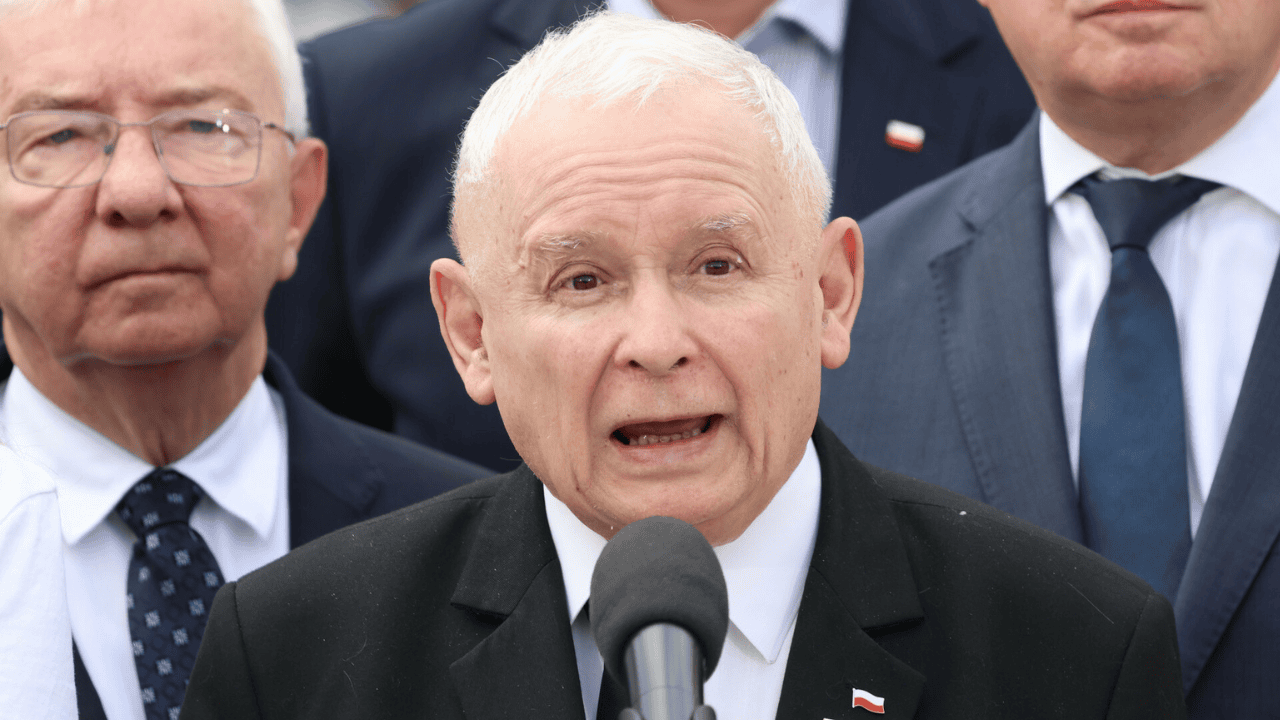
In the world of military aviation, some jets are built for speed, others for stealth, and a few for pure, unadulterated firepower.
These aerial behemoths don’t just carry weapons—they practically are weapons, flying arsenals that could make a small army jealous.
 Photo: RA.AZ | Flickr
Photo: RA.AZ | Flickr10 Heavily Armed Fighter Jets
Think of them as the overachievers of the sky, the ones who showed up to the fight with not just a knife, but an entire cutlery set, a few grenades, and probably a kitchen sink for good measure!
1. Boeing F-15EX Eagle II
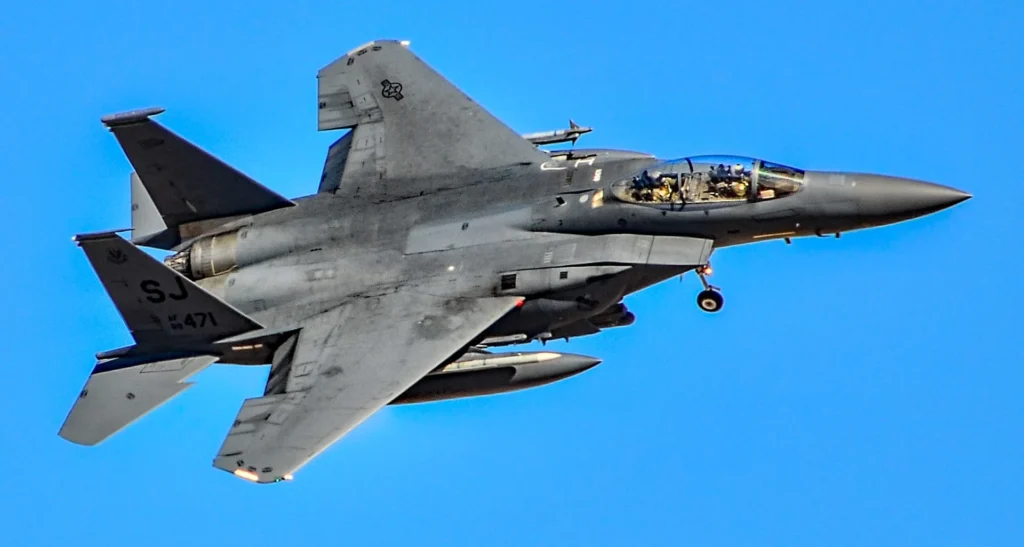 Photo: By Tomás Del Coro from Las Vegas, Nevada, USA – 89-0471 McDonnell Douglas F-15E Strike Eagle, CC BY-SA 2.0, https://commons.wikimedia.org/w/index.php?curid=71324269
Photo: By Tomás Del Coro from Las Vegas, Nevada, USA – 89-0471 McDonnell Douglas F-15E Strike Eagle, CC BY-SA 2.0, https://commons.wikimedia.org/w/index.php?curid=71324269Payload: 29,500 lbs / 13,381 kg
The F-15EX Eagle II stands as the undisputed king of heavily armed fighter jets. This isn’t just a revival of the classic F-15—it’s a complete transformation into a modern weapons platform that can carry nearly 15 tons!
Boeing designed the F-15EX with an unapologetic philosophy: forget stealth, embrace overwhelming firepower!
The aircraft features 22 hardpoints capable of carrying everything from AIM-120 AMRAAM air-to-air missiles to massive bunker-busting bombs. Its open mission systems architecture ensures compatibility with next-generation weapons and electronic warfare pods. When paired with stealthy fighters like the F-22 or F-35, the F-15EX becomes the ultimate “missile truck,” launching salvos at targets identified by its stealthier counterparts.
2. Chengdu J-20 Mighty Dragon
 Chengdu J-20; Photo- Wikipedia
Chengdu J-20; Photo- WikipediaPayload: 24,000 lbs / 10,886 kg
China’s answer to American fifth-generation fighters, the J-20, combines stealth with impressive firepower. Unlike Western fighters optimised for close combat agility, the J-20 focuses on long-range engagement and sensor reach. Its design reflects China’s strategy for controlling vast airspace over the Western Pacific.
The aircraft features internal weapons bays to maintain stealth characteristics, plus external hardpoints for maximum payload missions. Armed with PL-15 beyond-visual-range missiles and PL-10 short-range interceptors, the J-20 can engage multiple targets while remaining largely invisible to enemy radar.
3. Sukhoi Su-57
 Sukhoi Su-57; Photo- Wikipedia
Sukhoi Su-57; Photo- WikipediaPayload: 22,000 lbs / 9,979 kg
Russia’s flagship fifth-generation fighter combines stealth, agility, and devastating firepower.
The Su-57 features an innovative weapons configuration with two large main weapon bays between the engines and smaller side bays near the wing roots. This design allows internal carriage of various munitions while preserving stealth characteristics.
For air-to-air combat, it can deploy 4 beyond-visual-range missiles in the main bays and short-range R-74M2 missiles in the side bays.
The aircraft can also carry precision-guided bombs, cruise missiles, and electronic warfare equipment. Its thrust-vectoring engines provide exceptional manoeuvrability, making it deadly in both beyond-visual-range and close combat scenarios.
4. Dassault Rafale
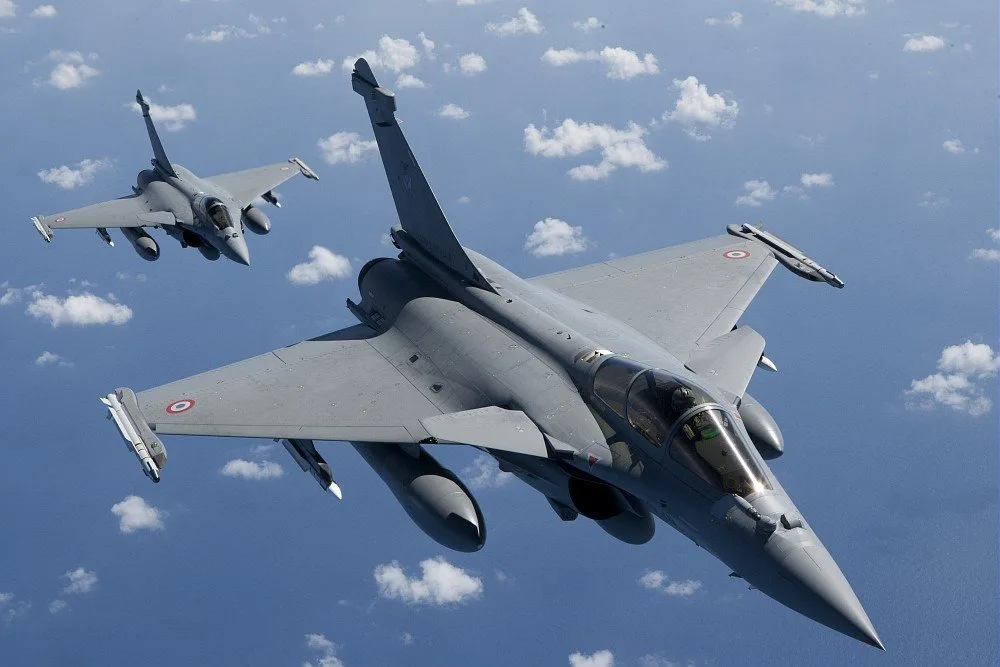 Photo- Dassault Aviation
Photo- Dassault AviationPayload: 20,900 lbs / 9,500 kg
France’s Rafale represents the pinnacle of “omnirole” fighter design, capable of seamlessly switching between air-to-air combat and deep strike missions within a single sortie. What distinguishes the Rafale isn’t just its impressive payload capacity, but its exceptional weapon integration capabilities.
The aircraft can deploy nuclear cruise missiles, Meteor beyond-visual-range air-to-air missiles, SCALP cruise missiles, and precision-guided bombs.
Its advanced sensor fusion suite coordinates these diverse weapons through one of the most sophisticated combat systems in any non-stealth fighter. The Rafale’s 14 hardpoints provide exceptional flexibility for mission planning.
5. Eurofighter Typhoon
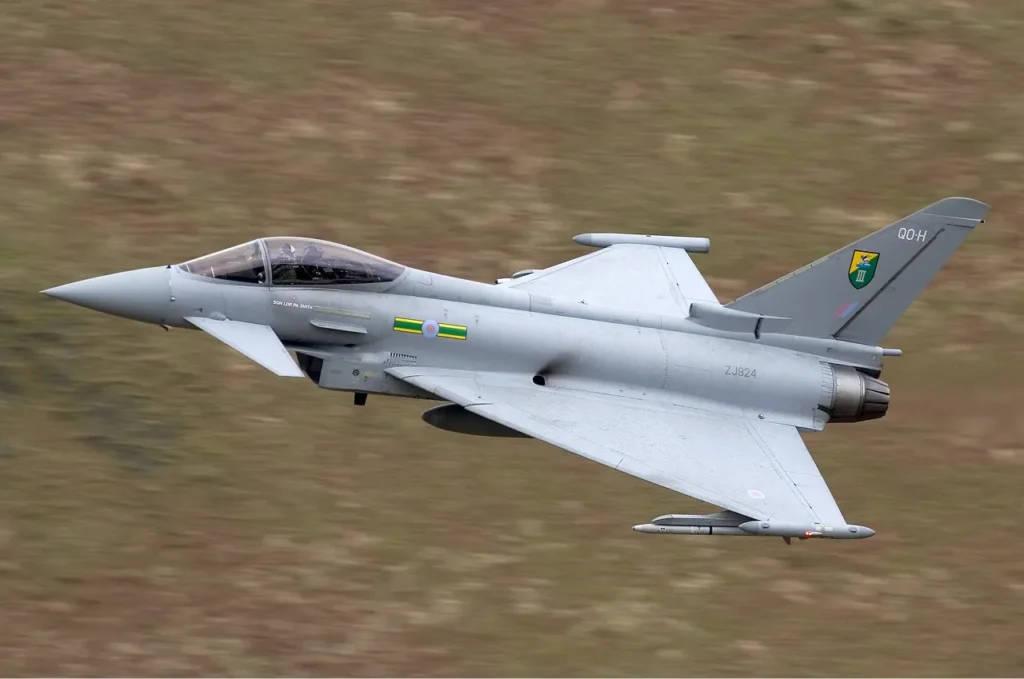 Eurofighter Typhoon; Photo- Wikipedia
Eurofighter Typhoon; Photo- WikipediaPayload: 20,000 lbs / 9,000 kg
Originally conceived as an air superiority fighter, the Eurofighter Typhoon has evolved into a formidable multirole platform.
Its 13 hardpoints can accommodate a wide range of weapons, from AIM-120 AMRAAM and Meteor air-to-air missiles to Paveway precision-guided bombs and Storm Shadow cruise missiles.
The Typhoon’s sustained agility at high speeds gives it unique advantages in beyond-visual-range engagements.
Recent upgrades have added enhanced electronic warfare capabilities and improved ground attack systems, making it increasingly effective in contested environments. Its powerful Euroradar CAPTOR-M radar provides excellent detection and tracking capabilities.
6. Lockheed Martin F-35 Lightning II
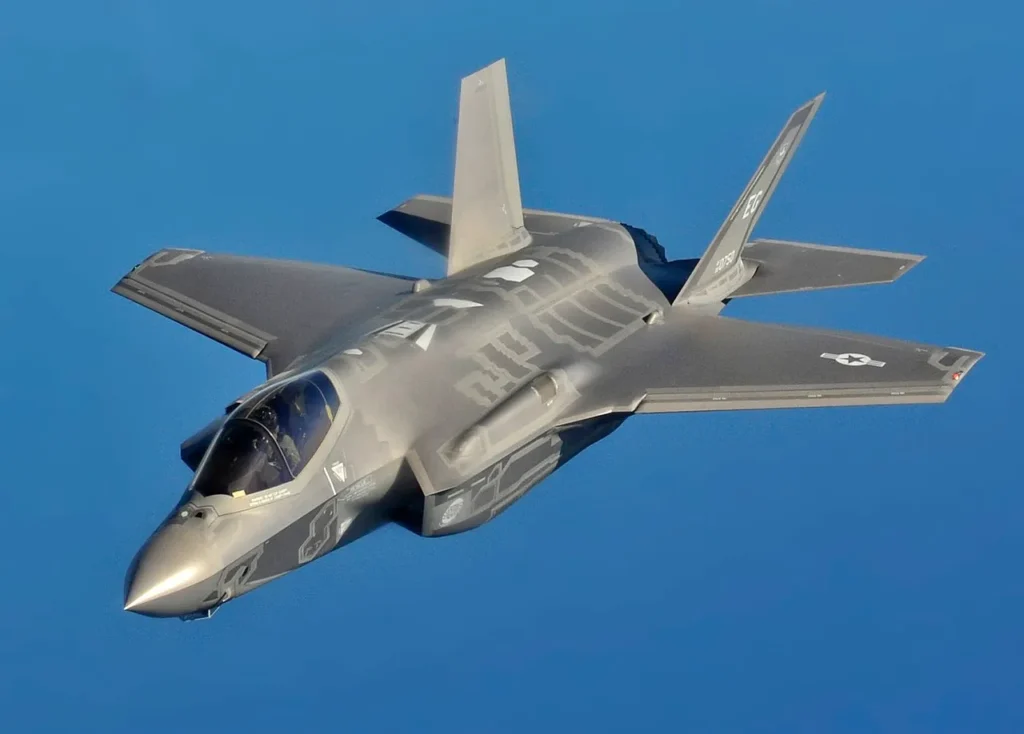 Lockheed Martin F-35 Lightning II; Photo- Wikipedia
Lockheed Martin F-35 Lightning II; Photo- WikipediaPayload: 18,000 lbs / 8,200 kg
The F-35 Lightning II prioritises precision and survivability over raw firepower. In stealth mode, it can carry 5,700 pounds internally across four weapon stations, maintaining its low radar signature.
When stealth isn’t critical, 6 external hardpoints can accommodate an additional 15,000 pounds of ordnance.
The F-35’s true strength lies in its sensor fusion and networking capabilities. Its advanced radar, electro-optical systems, and data links allow it to act as a forward sensor node, sharing targeting information with other platforms.
This makes it particularly effective when paired with heavily armed fighters like the F-15EX or naval platforms.
7. Mitsubishi F-2
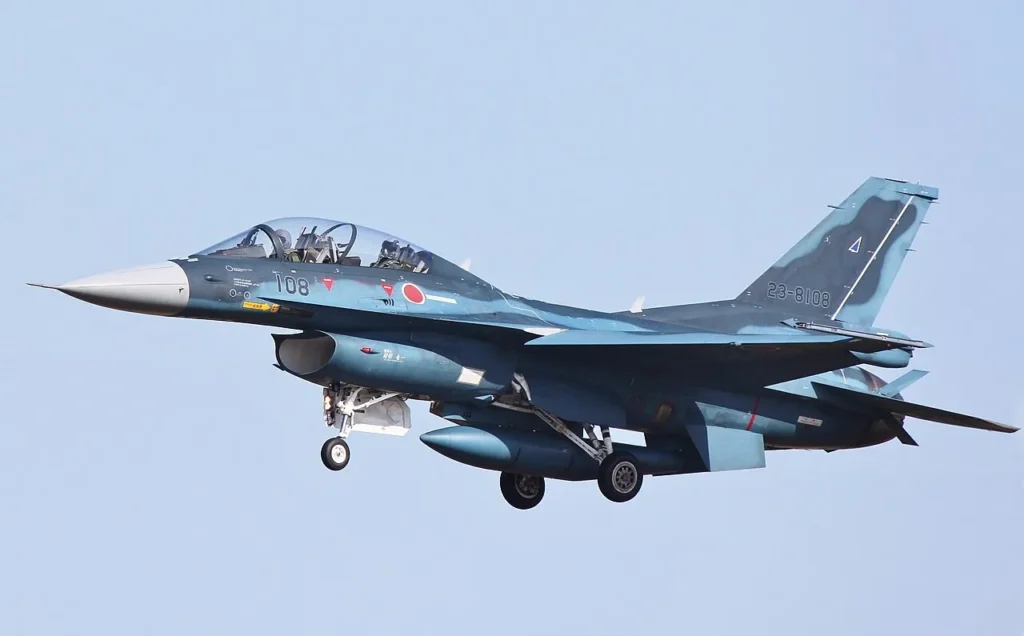 Mitsubishi F-2; Photo- Wikipedia
Mitsubishi F-2; Photo- WikipediaPayload: 17,824 lbs / 8,085 kg
Often called the “super F-16,” Japan’s F-2 is specifically optimised for maritime defence operations.
The aircraft was among the first operational fighters to feature AESA radar technology, providing advanced tracking and targeting capabilities. Its larger wing area and strengthened structure enable higher payload capacity than its F-16 predecessor.
The F-2 can carry ASM-1 and ASM-2 anti-ship missiles, AAM-4, medium-range air-to-air missiles, and various precision-guided bombs.
Its capabilities are tailored for Japan’s unique geographic requirements, providing long-range strike capacity over the Pacific Ocean. The aircraft’s composite materials and advanced avionics enhance both range and survivability.
8. Boeing F/A-18E/F Super Hornet
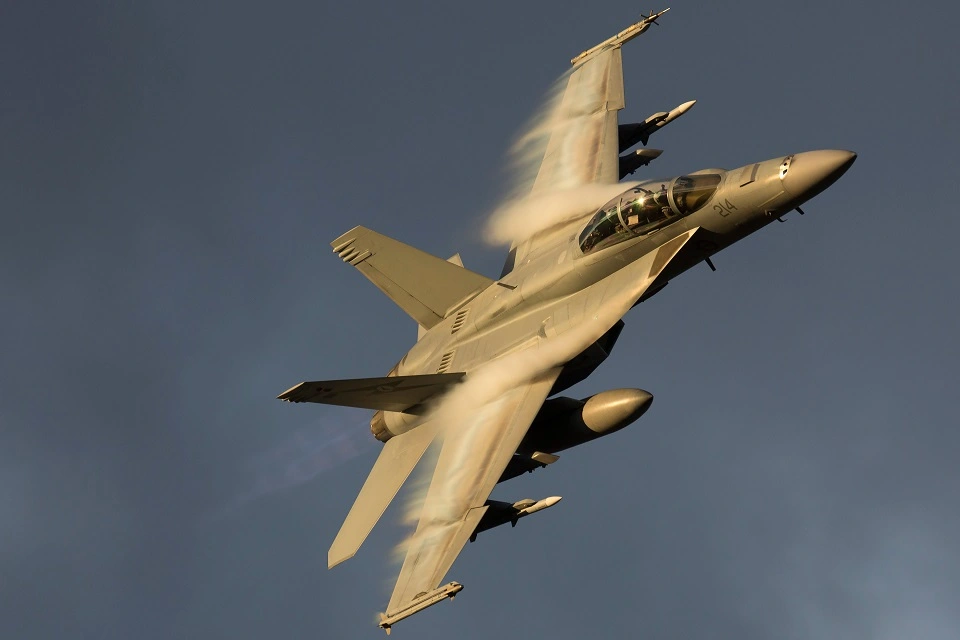 Boeing F/A-18F Super Hornet; Photo: Royal Australian Air Force (RAAF)
Boeing F/A-18F Super Hornet; Photo: Royal Australian Air Force (RAAF)Payload: 17,750 lbs / 8,050 kg
The Super Hornet serves as the backbone of U.S. Navy carrier aviation, designed from the ground up for naval operations.
Its 11 hardpoints can accommodate a diverse weapons load, including AIM-120 AMRAAM missiles, Harpoon anti-ship missiles, HARM anti-radiation missiles, and various precision-guided bombs.
The aircraft’s rugged design allows it to launch with heavy ordnance loads and land back on carriers with unspent weapons. Recent Block III upgrades have enhanced its stealth characteristics, extended airframe life to 10,000 hours, and improved cockpit systems.
9. Sukhoi Su-30
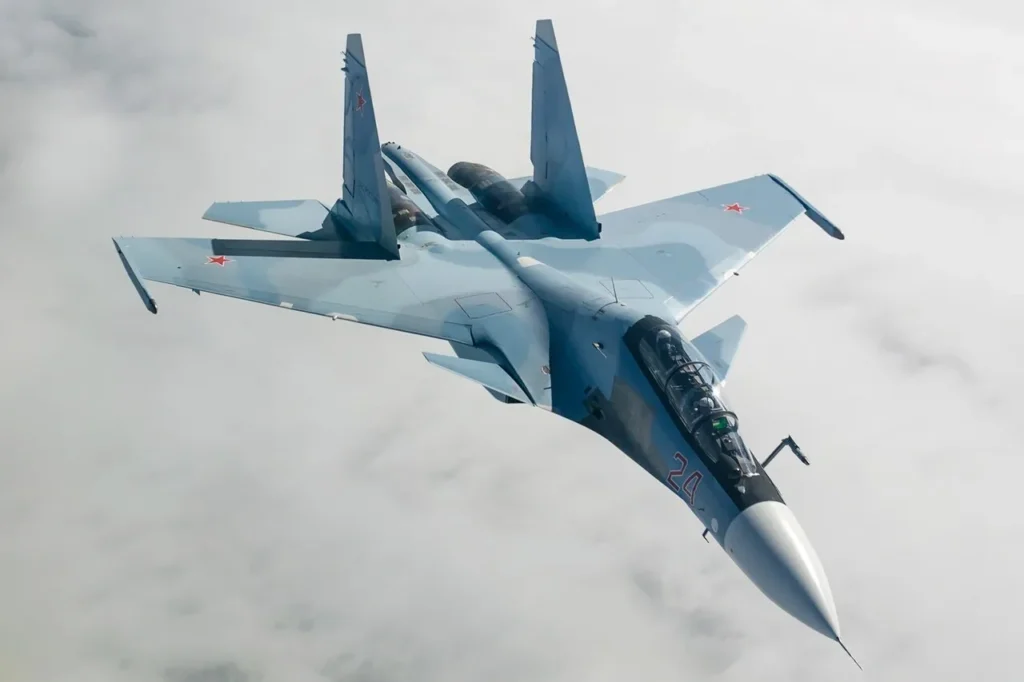 Sukhoi Su-30SM; Photo- Wikipedia
Sukhoi Su-30SM; Photo- WikipediaPayload: 17,673 lbs / 8,016 kg
The Su-30 represents the most versatile member of the Flanker family, exported to multiple countries including India, China, Malaysia, and Algeria. This twin-seat, long-range fighter excels in extended missions, capable of conducting air-to-air and strike operations simultaneously across its 12 hardpoints.
Armed with R-77 medium-range missiles, R-73 short-range missiles, and various precision-guided munitions, the Su-30 can engage multiple threat types.
Its second crew member reduces pilot workload during complex missions, while in-flight refuelling capability extends operational range.
10. Sukhoi Su-35S
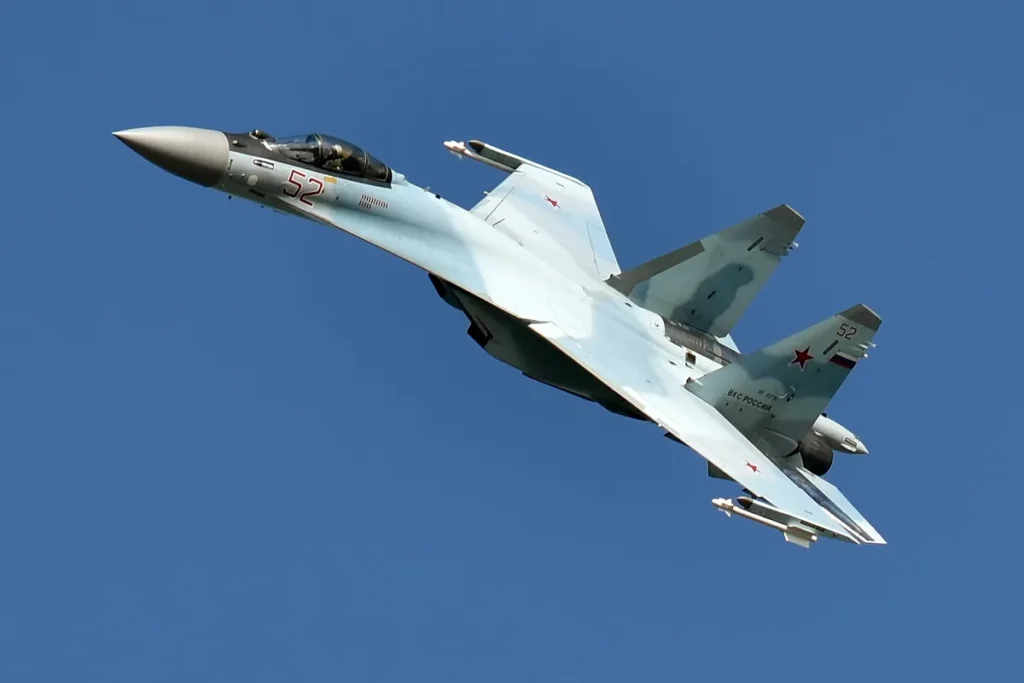 Sukhoi Su-35S; Photo- Wikipedia
Sukhoi Su-35S; Photo- WikipediaPayload: 17,632 lbs / 8,000 kg
The Su-35S represents the ultimate evolution of the Flanker design, Russia’s most advanced non-stealth fighter. Despite external similarities to the Su-27, it features completely redesigned flight controls, advanced radar systems, and thrust-vectoring engines that provide exceptional manoeuvrability.
The aircraft can carry R-77M medium-range missiles, R-74M short-range missiles, Kh-31 anti-radiation missiles, and Kh-59 standoff cruise missiles across its 12 hardpoints. Combat experience in Syria has demonstrated its effectiveness in both air-to-air and precision strike roles.
 Photo: Ian Abbott | Flickr
Photo: Ian Abbott | FlickrThe Reality of Maximum Payload
These fighters rarely operate at maximum payload capacity during actual missions.
“Beast mode” configurations—carrying maximum weaponry—are typically reserved for specific strike missions or demonstrations.
Mission requirements, fuel considerations, range needs, and tactical situations usually dictate lighter, more specialised loadouts that optimise aircraft performance for specific objectives.
Bottom Line
These 10 aerial arsenals prove that in military aviation, sometimes bigger is better, at least when it comes to carrying capacity. From the F-15EX’s overwhelming 29,500-pound payload to the Su-35S’s 17,632-pound capability, these fighters represent the pinnacle of airborne firepower.
They’re the ultimate overpackers of the aviation world, showing up to every conflict with enough ordnance to handle whatever surprises await. After all, it’s better to have too much firepower and not need it than to need it and be stuck throwing your helmet at the enemy!
Stay tuned with us. Further, follow us on social media for the latest updates.
Join us on Telegram Group for the Latest Aviation Updates. Subsequently, follow us on Google News
Largest Air Forces in the World in 2025, No.6 Will Surprise You
The post 10 Most Heavily Armed Fighter Jets in the World appeared first on Aviation A2Z.




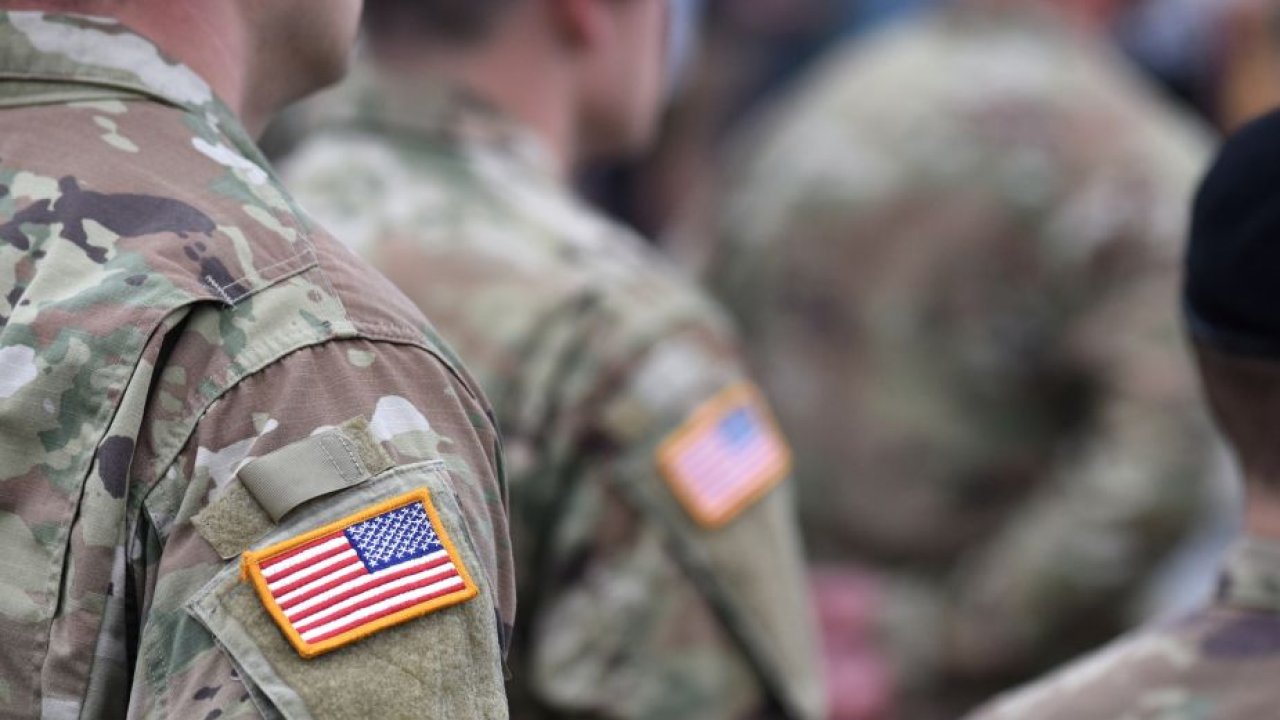


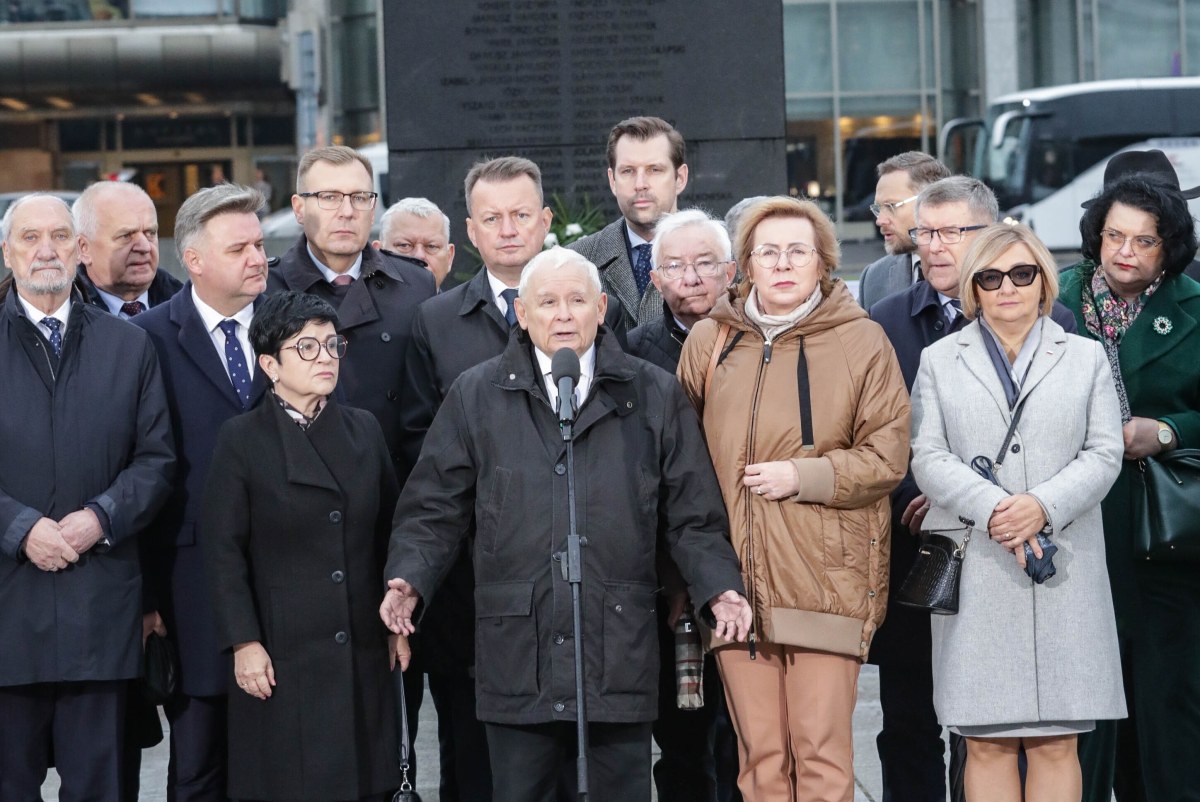
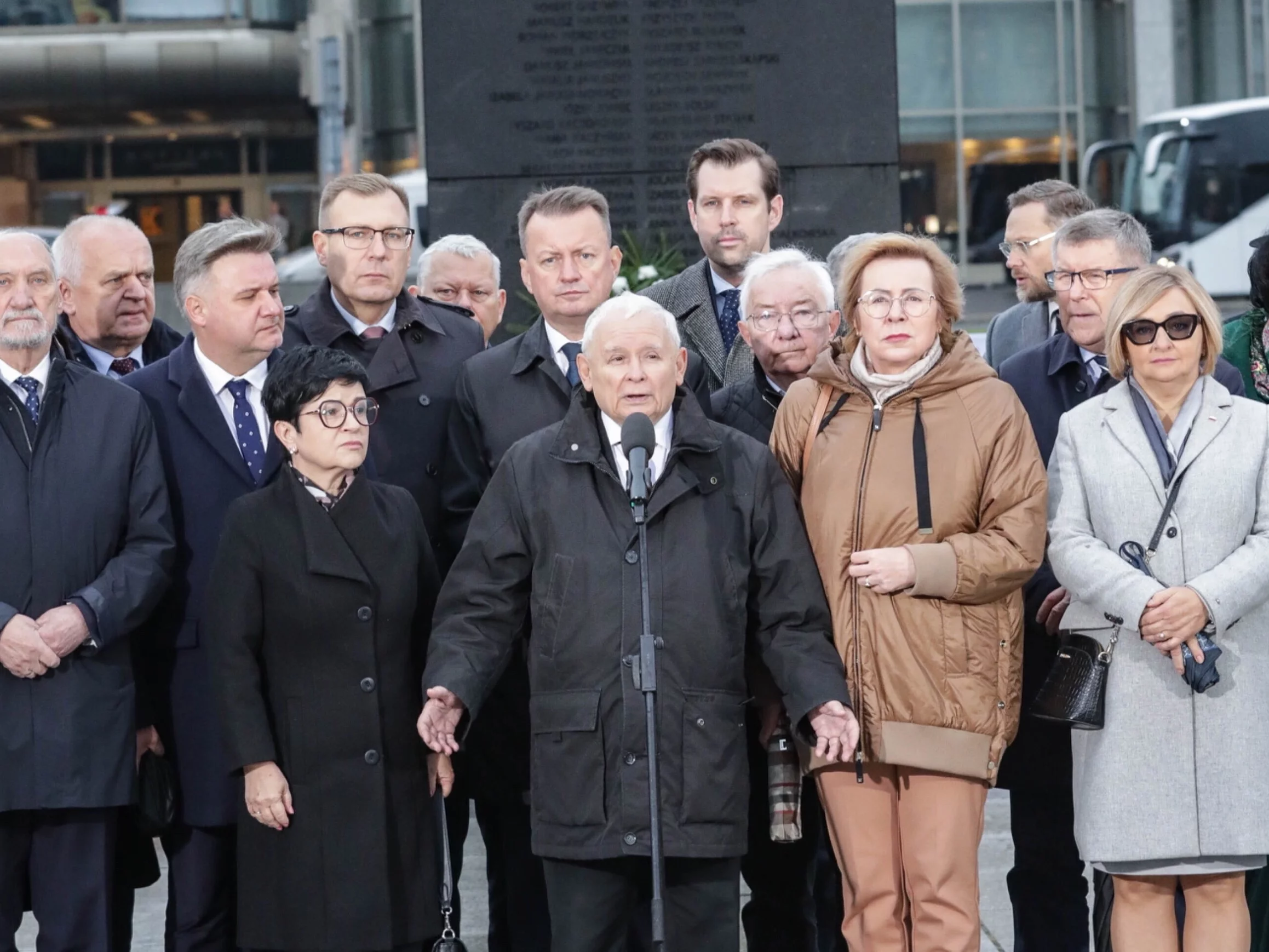
![A gdyby tak rzucić wszystko i wyjechać do Maroka… [zdjęcia]](https://tarnow.ikc.pl/wp-content/uploads/2025/10/ucieczka-do-tangeru-fot.-Artur-Gawle0001.jpg)

